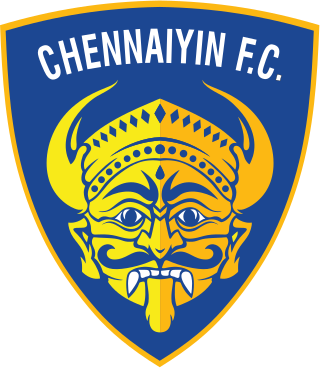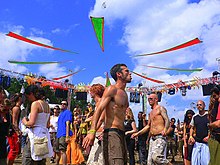
Samba is a name or prefix used for several rhythmic variants, such as samba urbano carioca, samba de roda, recognized as part of the Intangible Cultural Heritage of Humanity by UNESCO, amongst many other forms of samba, mostly originated in the Rio de Janeiro and Bahia States.

The State of India, also referred as the Portuguese State of India or simply Portuguese India, was a state of the Portuguese Empire founded six years after the discovery of a sea route to the Indian subcontinent by Vasco da Gama, a subject of the Kingdom of Portugal. The capital of Portuguese India served as the governing centre of a string of military forts and trading posts scattered all over the Indian Ocean.

The Carnival in Rio de Janeiro is a festival held every year before Lent; it is considered the biggest carnival in the world, with two million people per day on the streets. The first Carnival festival in Rio occurred in 1723.
Mangalorean Catholics are an ethno-religious community of Latin Christians from the Diocese of Mangalore and the erstwhile South Canara area, by the southwestern coast of present-day Karnataka, India.
Goan Catholics are an ethno-religious community of Indian Christians adhering to the Latin Rite of the Catholic Church from the Goa state, in the southern part of the Konkan region along the west coast of India. They are Konkani people and speak the Konkani language.
This page is about Goan achievers in the world of sport. Goa is a tiny region along the west coast of India, and is known for its many athletes, in particular association football (soccer).

Brazil–India relations, also referred to as Indo-Brazilian relations, are the bilateral relations between Brazil and India.
The History of Mangalorean Catholics comprises three major eras. The first era consists of the cultural heritage shaped by Indo-Aryan migration into the Indus valley, later the migration to Govapuri and other prominent areas of the Konkan region, possibly due to a natural disaster that caused the drying up of the Sarasvati. Also, the various invasions and the political upheavals that followed in the pre-Partition eras of the northwest Indian subcontinent might be responsible for migration to Konkan in Western India. The second era was the legacy of Lusitanian culture, from the conversion of their Konkani ancestors to Roman Catholicism in the colonies of the Portuguese in Goa and Bombay, and the final era being the migration of the Roman Catholics in Goa to Mangalore and other parts of South Canara between the mid-16th and mid-18th centuries, forming a unique Mangalorean Catholic identity, and the subsequent growth and development of the community. Four centuries of living in South Canara gave these Catholics an identity of their own, distinct from Goans and Bombay East Indians.
Mangaloreans are a collection of diverse ethnic groups that hail from the historical locales of South Canara (Tulunaad) on the south western coast of Karnataka, India, particularly the residents native to Mangaluru.

Sousa, Souza, de Sousa, de Souza, Dsouza or D'Souza is a common Portuguese-language surname, especially in Portugal, Brazil, East Timor, India, and Galicia. In Africa, the name is common in former Portuguese colonies, especially among people who have some Portuguese and Brazilian roots in Ghana, Togo, Benin, Nigeria, Angola, São Tomé and Príncipe, Cape Verde, Guinea-Bissau, and Mozambique.
There is a small community of Indians in Brazil who are mainly immigrants and expatriates from India. There are currently about 9,200 people of Indian origin living in the country and a majority of them live in São Paulo and Rio de Janeiro. There are also a number of people of Indian origin who came to Brazil from both Britain's and Portugal's African colonies in the later half of the twentieth century.
There is a small but recognisable Russian community in India which comprises Indian citizens of Russian heritage as well with Russian expatriates and migrants residing in India. According to the Russian government, 845 Russian citizens are registered as living in India.
There is a small Italian community in India consisting mainly of Indian citizens of Italian heritage as well with expatriates and migrants from Italy who reside in India.

Luso-Indians or Portuguese-Indian, is a subgroup of the larger Eurasian multiracial ethnic creole people of Luso-Asians. Luso-Indians are people who have mixed Indian and Portuguese ancestry or people of Portuguese descent born or living or originating in former Portuguese Indian colonies, the most important of which were Goa and Damaon of the Konkan region in the present-day Republic of India, and their diaspora around the world, the Anglosphere, Lusosphere, the Portuguese East Indies such as Macao etc.

Goa is a state on the southwestern coast of India within the Konkan region, geographically separated from the Deccan highlands by the Western Ghats. It is bound by the Indian states of Maharashtra to the north, and Karnataka to the east and south, with the Arabian Sea in the west. It is India's smallest state by area and fourth-smallest by population. Goa has the highest GDP per capita among all Indian states, two and a half times as high as the GDP per capita of the country as a whole. The Eleventh Finance Commission of India named Goa the best-placed state because of its infrastructure, and India's National Commission on Population rated it as having the best quality of life in India. It is the second-highest ranking among Indian states in the human development index.

Poonam Pandey is an Indian model and an erotic actress. She debuted in Bollywood with the film Nasha in 2013.

Chennaiyin Football Club is an Indian professional football club based in Chennai, Tamil Nadu. The club competes in the Indian Super League (ISL), the top flight of Indian football. The club was founded in August 2014 during the inaugural season of the Indian Super League. It has won the Indian Super League title on two occasions, in the 2015, 2017–18 seasons respectively.

The Portuguese controlled Goa until 1961, when India took over. Only a very small fraction of Goans speak Portuguese nowadays. Although an essential religious language, there were 1,500 students learning Portuguese in Goa in 2015; totaling a number of 10,000 – 12,000 Portuguese speakers in the state.

Carnival in Goa, also called "Carnaval", "Intruz", "Entrado", or (colloquially) "Viva Carnival" refers to the festival of carnival, or Mardi Gras, in the Indian state of Goa. Though significantly smaller than the well-known Rio Carnival or the Portuguese Carnival of Madeira, the Goa Carnival is the largest in India and one of the few traditional celebrations of the Western Christian holiday in Asia. The current version of the Goa Carnival was modelled after the Rio Carnival by a local musician named Timoteo Fernandes and imposed in 1965 to attract tourists. It has since turned into a major tourist attraction for the small state.













